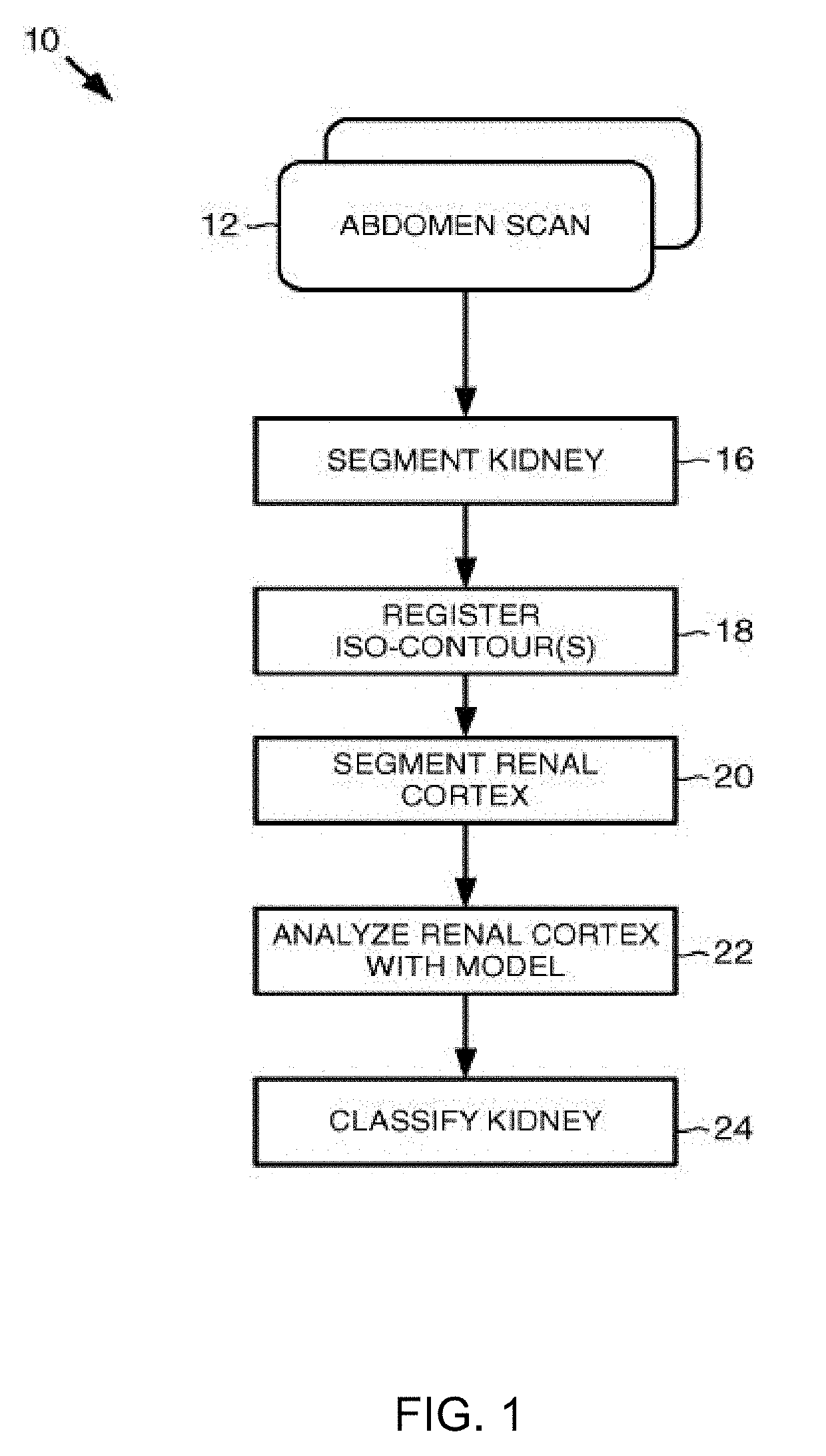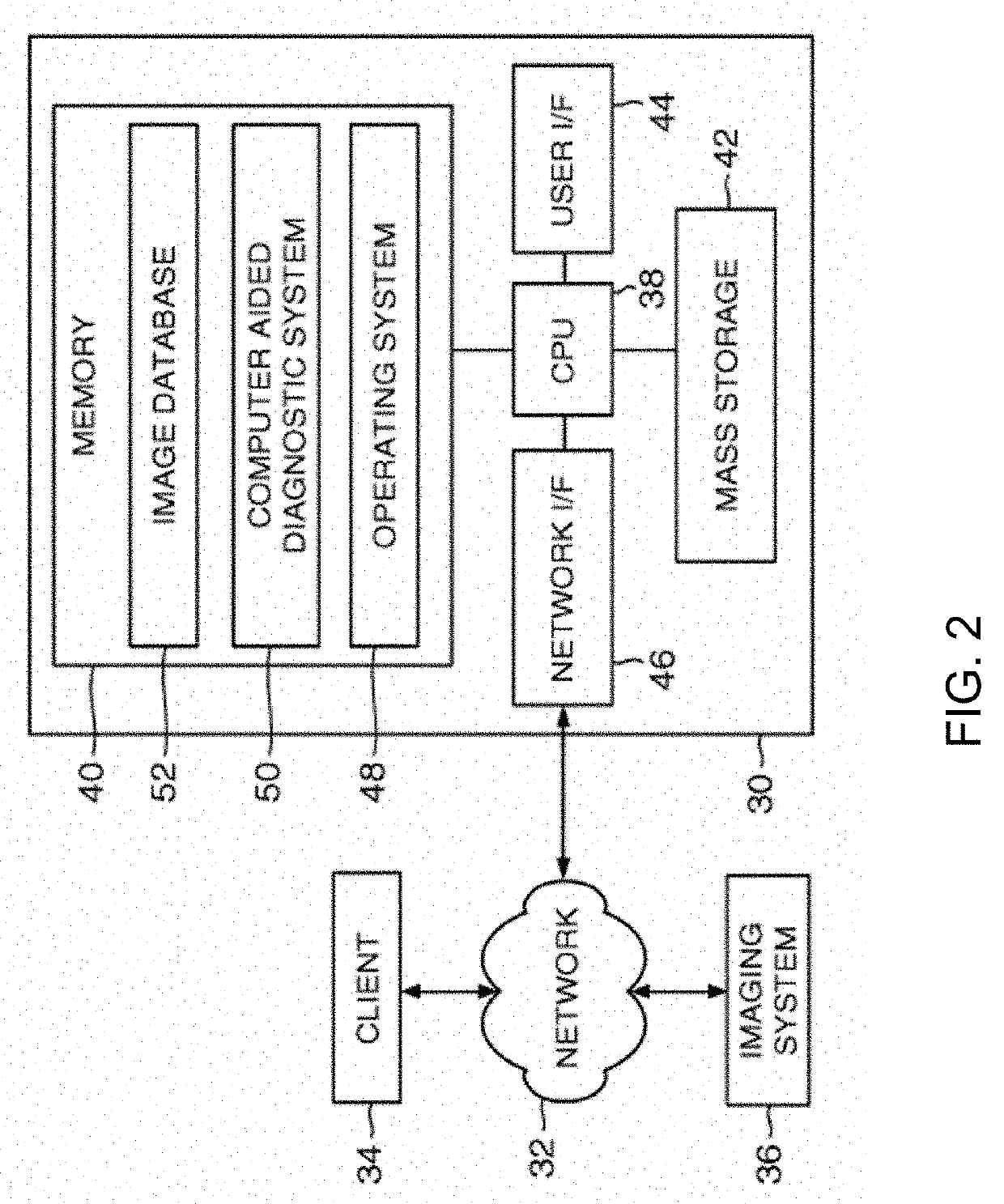Computer aided diagnosis system for classifying kidneys
a technology kidney, applied in the field of computer aided diagnosis system and automatic method to classify kidney, can solve the problems of patient development of chronic kidney disease, complications can still arise, and the kidney function is gradually lost, so as to achieve accurate identification and classification of renal transplants, reliable non-invasive diagnostic tools
- Summary
- Abstract
- Description
- Claims
- Application Information
AI Technical Summary
Benefits of technology
Problems solved by technology
Method used
Image
Examples
Embodiment Construction
[0052]Embodiments consistent with the invention provide for automated classification of a kidney based on image analysis of at least a portion of the kidney that is in image data of a medical scan, such as an abdomen scan. Consistent with embodiments of the invention, a transplanted kidney may be classified as acutely rejected or non-rejected based at least on image analysis performed on a medical scan associated with the transplanted kidney. For example, embodiments of the invention may receive an abdomen scan that comprises a plurality of time sliced dynamic contrast-enhanced magnetic response imaging (DCE-MRI) data that includes kidney image data. Embodiments of the invention may analyze the kidney image data, and based on a learned model that classifies kidneys, the transplanted kidney may be classified based on one or more features determined from the analyzed kidney image data.
[0053]Further details are provided in [1] F. Khalifa, M. El-Ghar, B. Abdollahi, H. Frieboes, T. EI-Di...
PUM
 Login to View More
Login to View More Abstract
Description
Claims
Application Information
 Login to View More
Login to View More - Generate Ideas
- Intellectual Property
- Life Sciences
- Materials
- Tech Scout
- Unparalleled Data Quality
- Higher Quality Content
- 60% Fewer Hallucinations
Browse by: Latest US Patents, China's latest patents, Technical Efficacy Thesaurus, Application Domain, Technology Topic, Popular Technical Reports.
© 2025 PatSnap. All rights reserved.Legal|Privacy policy|Modern Slavery Act Transparency Statement|Sitemap|About US| Contact US: help@patsnap.com



